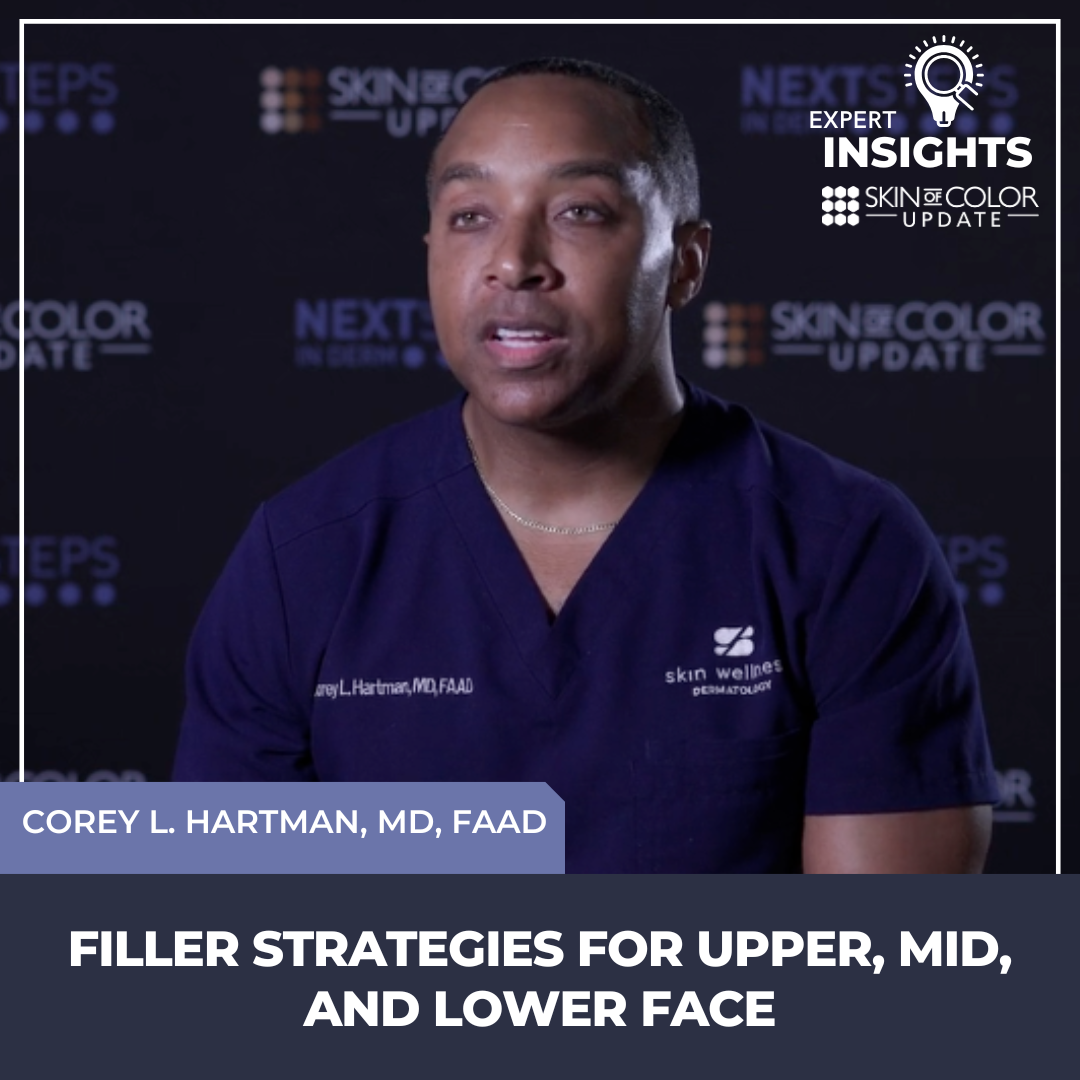Focusing on what makes a patient unique – including how that corresponds with their ethnic identity – is important when creating a filler treatment plan. That’s according to Dr. Corey Hartman, a dermatologist in Birmingham, Ala. Next Steps in Derm, in partnership with Skin of Color Update, interviewed Dr. Hartman, who shared three tips for helping patients obtain an enhanced appearance while still looking like themselves. Hear his strategies for the upper, mid and lower face. Find out why Dr. Hartman places a special emphasis on the upper face. Plus learn about a misconception in lip enhancement.
Further Reading
If you want to read more about fillers, check out the following articles published in the Journal of Drugs in Dermatology:
ABSTRACT
The Restylane® portfolio of hyaluronic acid (HA) fillers comprises a broad range of products, each with a unique combination of gel strength/firmness and flexibility. Restylane® Shaype™ (HASHA) is a new HA injectable produced with NASHA-HD™ technology and the most recent addition to the Restylane portfolio. NASHA-HD is an evolution of the NASHA™ platform that adds more HA and uses a more efficient cross-linking even though the degree of modification is kept low. HASHA has an HA-concentration of 25 mg/mL and a G prime (G’) of 916 Pa (0.1 Hz). Experts recommend using HASHA for treatment in the chin area because its high G’ allows a higher degree of correction/projection with lower injection volumes, especially in those patients with pronounced chin retrusion, together with a long duration of effect and good overall safety. Depending on the patient’s needs and the aim of treatment, different approaches and injection techniques should be applied. This paper reflects the recommendations of an interdisciplinary expert panel for the use of HASHA for the correction of the chin area, including patient selection, product volume, product placement, injection technique, and post-treatment care. Recommendations were discussed and agreed as a consensus, according to cross-sectional expertise and clinical experience.
ABSTRACT
Background: Poly-L-lactic acid (PLLA) is an injectable filler used for restoring facial fat volume loss that improves skin quality.
Objective: To evaluate the histological changes underlying the observed improvement in skin quality after repeated PLLA injections.
Methods: Ten healthy women were enrolled in this randomized, placebo-controlled, single-center study. Eligible subjects received 3 treatments every 4 weeks with either PLLA (treatment group) or saline (control group) injections, into both sides of the face. Follow-up visits were at week 18 after the last treatment. Assessments included live ratings, patient questionnaires, three-dimensional microtopography imaging analysis, and histological analysis from biopsies taken before and after PLLA treatment.
Results: At the 18-week follow-up, there was a significant improvement in investigator- and subject-rated global aesthetic improvement (GAIS) scores, as well as a decrease in wrinkle severity in PLLA-treated but not placebo-treated patients. Skin quality parameters of erythema, pore size, and roughness were significantly improved from baseline and compared with placebo at the 18-week follow-up as assessed by microtopographic analysis and investigator ratings. Histologic analysis revealed increased tissue remodeling and angiogenesis in PLLA-treated tissues at the 18-week follow-up and decreased elastin fragmentation compared with baseline. No treatment-related adverse events occurred.
Conclusion: Repeated PLLA treatments may improve skin quality through tissue remodeling and neovascularization.
Did you enjoy this video interview? Find more here.

